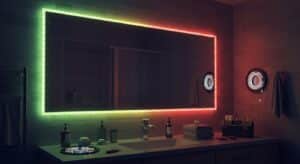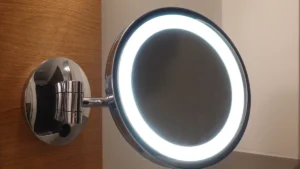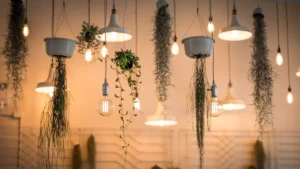You might get confused when you compare LED strip light prices. The big differences can make you wonder why some are much more expensive. It is important to understand why these prices change. For example, the global market for LED strip lights was worth USD 4,417.64 Million in 2023. It is expected to grow a lot, reaching USD 12,046.15 Million by 2031. This growth shows that more people want energy-saving lights. By knowing these facts, you can make better choices when picking the right LED strip lights for you.
Key Takeaways
LED strip light prices change because of materials, how they are made, and the brand’s reputation. Knowing these can help you choose wisely.
Good materials, like flexible circuit boards and copper for cooling, make them last longer and work better. Spending more on quality can save you money later.
Buying longer LED strip lights is usually cheaper. Companies often give discounts for buying in bulk, which lowers the price per metre.
Think about what type of LED strip lights you need. Single colour strips are less expensive and easier, while RGB strips have more features but cost more.
Always look for warranties and energy ratings. These can give you peace of mind and help you save money in the future.
Quality Factors
When you think about LED strip lights, quality is very important for their price. Two main things affect this quality: the materials used and the manufacturing standards.
Materials Used
The materials that makers pick for LED strip lights greatly affect how long they last and how well they work. Here’s a list of common materials and what they do:
Material | Impact on Durability and Performance |
|---|---|
Flexible Printed Circuit Board | Can bend and fit surfaces, giving steady light and flexibility. |
LEDs | Save energy and last a long time, giving bright light and come in different colour temperatures. |
Silicone or Plastic Coating | Shields parts from harm, boosts durability, and makes them waterproof and dustproof. |
Copper for Heat Dissipation | Helps manage heat, stops overheating, and keeps LEDs working for longer. |
You should also think about these points regarding materials:
Mechanical Stability: Strong materials like aluminium and copper lower the chance of damage.
Environmental Resistance: Materials need to resist water, chemicals, and temperature changes to last longer.
Thermal Cycling: Good thermal cycling management helps LED light bars last longer.
The prices of these materials can be very different. For example, makers in China have lower material costs because they get parts locally. On the other hand, countries like Vietnam have higher costs because they need to import materials, even though they save on labour.
Manufacturing Standards
Manufacturing standards are also very important for the quality of LED strip lights. Following these standards makes sure products are safe and work well. Here are some common quality tests and their certifications:
Quality Control Tests | Certifications |
|---|---|
Integrating sphere test for LED | CE |
Colour comparison checking | REACH |
Lighting source test | ROHS |
Environmental test | UL |
Corrosion resistance test | ETL |
Waterproof test | SAA |
Carton box drop test | TUV |
Integrating sphere test for LED tape | LM-80 |
These standards look at many things, such as:
Safety
EMC (Electromagnetic Compatibility)
Energy Efficiency
Environmental Protection
Electrical Safety Test
Photobiological Safety Test
Environmental Reliability Test
Makers who follow international standards usually have higher costs. But this spending makes sure the product is reliable and meets rules. For example, quality checks add to the cost but really improve the product’s reliability. Certified parts might cost more, but they lower the chances of problems with rules and returns.
Length and Cost of LED Strip Lights

When you consider purchasing LED strip lights, the length plays a significant role in determining the price. You will find that manufacturers offer both standard and custom lengths, each with its own pricing structure.
Standard vs Custom Lengths
Standard lengths typically range from 1 metre to 5 metres. The average price per metre for these standard LED strip lights falls between $10 and $30, depending on the quality and type. For example, if you buy a 5-metre strip, you might pay around $50, which translates to $10 per metre.
In contrast, custom lengths often come at a higher price. Manufacturers usually charge more for customisation due to the additional processing involved. Here’s a table that illustrates the pricing for various custom lengths:
You can see that as the length increases, the price also rises. This trend highlights the cost-effectiveness of purchasing longer strips.
Cost-Effectiveness of Longer Strips
Buying longer LED strip lights often proves more economical. When you purchase in bulk, manufacturers typically offer discounts. This means you pay less per metre compared to buying shorter lengths. For instance, if you buy a 10-metre strip, the price per metre may drop to around $8, compared to $10 for a 1-metre strip.
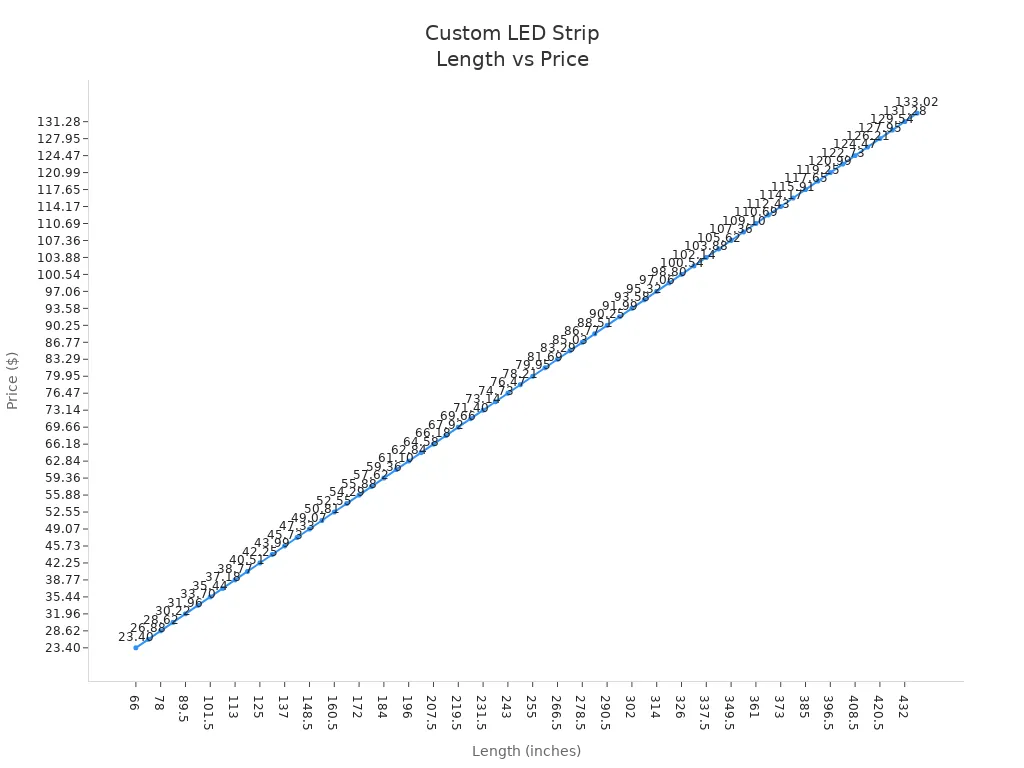
Types of LED Strip Lights
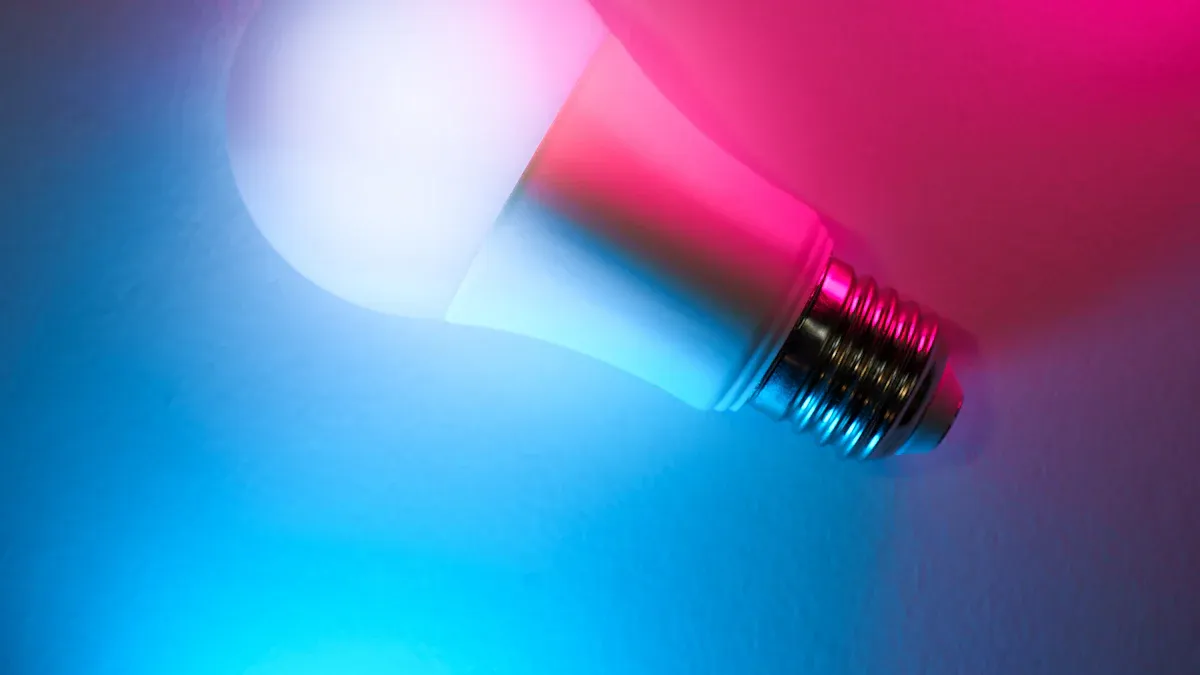
When you pick LED strip lights, you will see many types. Each type has its own features and benefits. Two common types are single colour and RGB (Red, Green, Blue) lights.
Single Colour vs RGB
Single colour LED strip lights show one steady colour. They are easy to install and use. You can find them in colours like warm white, cool white, or other colours. These strips usually cost less than RGB strips. Their simple design makes them great for accent lighting or setting a mood in a room.
In contrast, RGB LED strip lights are more flexible. They let you mix colours and create fun lighting effects. However, this technology costs more. Here are some reasons why RGB strips are more expensive:
RGB LED strips need a controller and extra software.
The advanced systems for mixing colours add to the cost.
You get more features, which makes it worth it for many people.
Waterproof vs Non-Waterproof
Another key point is whether you need waterproof LED strip lights. These lights have different waterproof ratings that affect their prices. Here’s a table showing the waterproof ratings and how they impact cost:
Waterproof Rating | Description | Price Influence |
|---|---|---|
IP20 | Not waterproof, good for dry indoor areas. | Quite cheap. |
IP54 | Splash-proof, protects against small water drops. | A bit more than IP20. |
IP65 | Waterproof against splashes and short dips. | More than IP20 and IP54. |
IP67 | Fully dustproof, can be in water up to 1 metre. | Quite expensive due to high waterproof needs. |
IP68 | Deep waterproof, good for long-term water use. | Most expensive due to strict material and making rules. |
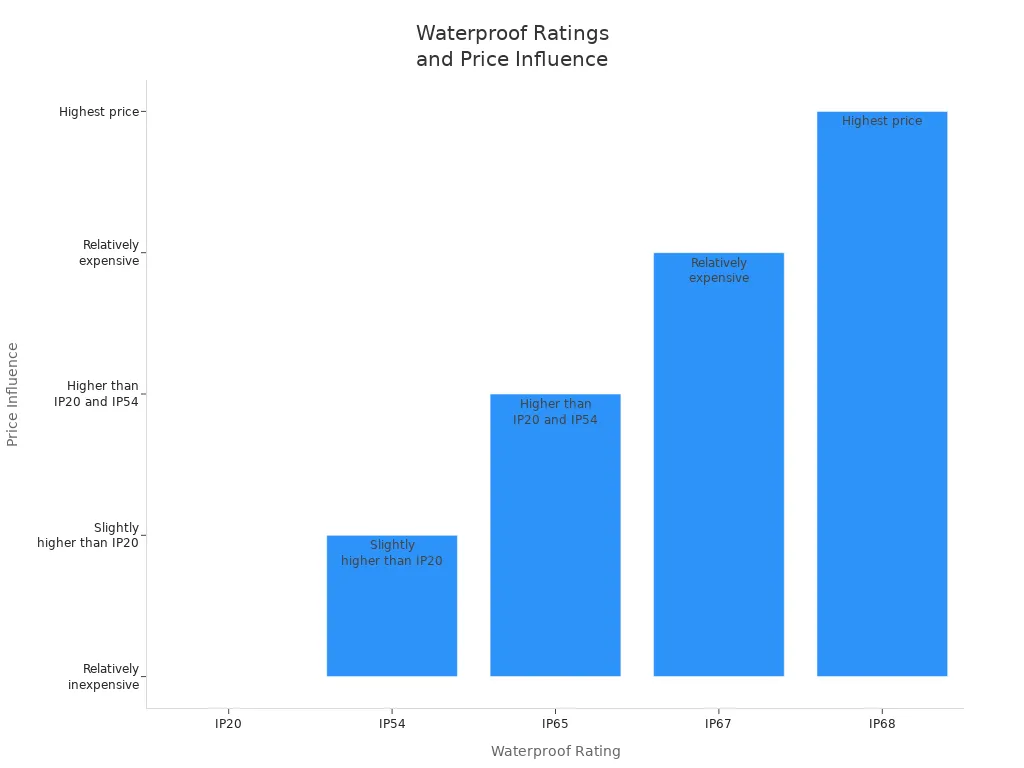
Choosing between waterproof and non-waterproof lights depends on how you plan to use them. If you want to put lights in wet places, like bathrooms or outside, getting waterproof LED strip lights is very important.
Brand Influence on Pricing
When you buy LED strip lights, the brand can affect the price a lot. Well-known brands usually cost more than new or less famous ones. This happens for a few reasons, like their reputation, quality checks, and customer support.
Established Brands vs Newcomers
Well-known brands have earned their reputation over many years. They spend money on research and development to make sure their products are good. This spending often leads to higher prices. For example, look at these brands and their price ranges:
Brand/Type | Price Range | Features |
|---|---|---|
WiZ Smart RGBIC strips | £8–£15 | Basic smart controls and RGB colours |
Govee RGBIC 2 Pro | £15–£40 | Individually addressable LEDs and pixel-perfect accuracy |
HitLights COB strips | £20–£50 | 1000 lm/m and 90+ CRI for professional-grade lighting |
New brands might sell their products for less to get customers. But, these products may not be as good or reliable. You might save money at first, but you could end up spending more later if you need replacements or repairs.
Brand Reputation and Warranty
The reputation of a brand can really change the prices of LED strip lights. Famous brands often give warranties, which promise their products are good. A warranty can cover problems and faults, giving you peace of mind. Less known brands might not provide these guarantees, which puts you at risk if the product breaks.
Extra Features and Their Costs
When you look at LED strip lights, you will see that extra features can change the price a lot. Two main features to notice are dimming options and smart technology.
Dimming Options
Dimming options let you change how bright your LED strip lights are. This feature makes your lighting more flexible. You can create different feelings in your room. For example, you might want bright lights for working and softer lights for relaxing.
The price of LED strip lights with dimming options usually goes from £50 to £150. Basic models have simple dimming, while better ones offer more control and features.
Smart Technology
Smart technology takes LED strip lights further. These lights connect to your home Wi-Fi. You can control them using smartphone apps or voice commands. You can set schedules, change colours, and even sync lights with music.
The price for smart LED strip lights can vary a lot. Here’s a breakdown:
Type of LED Strip Light | Price Range |
|---|---|
Basic single-colour setup | £50 – £100 |
RGB colour-changing system | £100 – £200 |
Smart LED system with Wi-Fi | £150 – £300 |
Smart LED strip lights often work with different platforms, making them more useful. Here’s a summary of common features:
Feature | Description |
|---|---|
Compatibility | Matter standard makes sure they work with many smart home systems. |
Pricing | Prices change based on features, with choices for different budgets. |
Features | Some strip lights have advanced features like multiple colour zones and weather resistance. |
Platform | Matter-compatible strip lights have a consistent set of features across all platforms. |
For example, the BATHEBRIGHT LED Strip Lights improve your bedroom with colour choices and Bluetooth control. This extra function explains their higher price. The Cync app also lets you make custom schedules and choose from many white colour tones, making your experience even better.
In conclusion, many things affect the price of LED strip lights. You should think about brightness, colour temperature, length, and how long they last when picking the right lights. Brighter lights, measured in lumens, give better lighting. Warmer colours make a space feel relaxing, while cooler colours help you focus.
When making your choice, remember to:
Check the size and shape of where you will install them.
Think about what lighting you need now.
Make sure the style matches your home’s look.
Avoid common mistakes like wrong colours and not enough controls. Spending on good products can save you money later. Always look for warranties and think about energy ratings to get the most savings.
Feature | Description |
|---|---|
Brightness | Measured in lumens; more lumens are best for bright light, while fewer lumens give a softer glow. |
Colour Temperature | Changes the feel of a room; warmer colours are calming, while cooler colours help with focus and work. |
Length and Density | Affects how much light you get and how even it is; more density means better light spread. |
Durability | Choose moisture-resistant strips for bathrooms or outside; protective layers help them last longer. |
By thinking about these points, you can make a smart choice that suits your budget and lighting needs.
FAQ
What are the pros and cons of LED strip lights?
LED strip lights save energy and are very flexible. They can brighten up your space with different colours and effects. But, they might need extra parts for installation. Some cheaper ones may not last long.
How do I choose the right length of LED strip lights?
Think about the area you want to light up. Measure the space and pick a length that fits well. Longer strips usually give you better value. They can help lower your lighting costs over time.
Can I use LED strip lights outdoors?
Yes, but you need to choose waterproof ones. Look for a high IP rating, like IP65 or IP68. This will keep them safe from moisture and bad weather.
How do LED strip lights compare to traditional lighting?
LED strip lights use less energy than regular bulbs. They also last longer. This can help you save a lot on your electricity bill in the long run.
Are LED strip lights easy to install?
Yes, most LED strip lights have sticky backs for easy setup. You can cut them to the length you need and stick them on different surfaces without needing a professional.
See Also
Best LED Strip Lights of 2024: A Pricing Overview
Selecting The Perfect LED Strip Lights For Linear Lighting
Deciding Between 2835, 3528, And 5050 LED Strip Types

